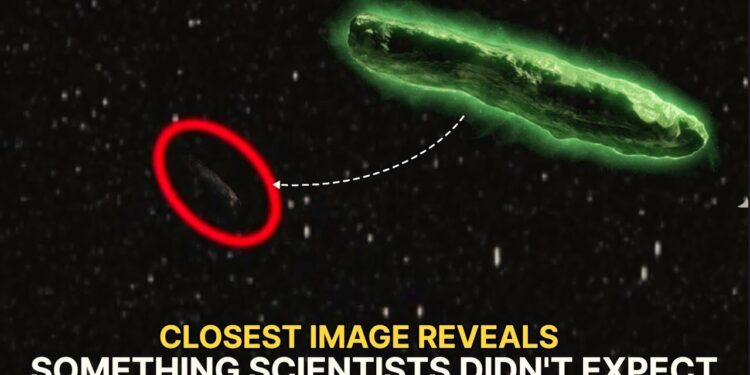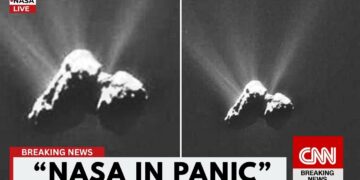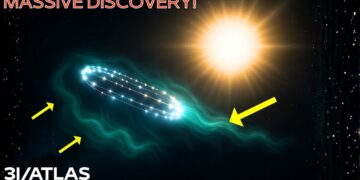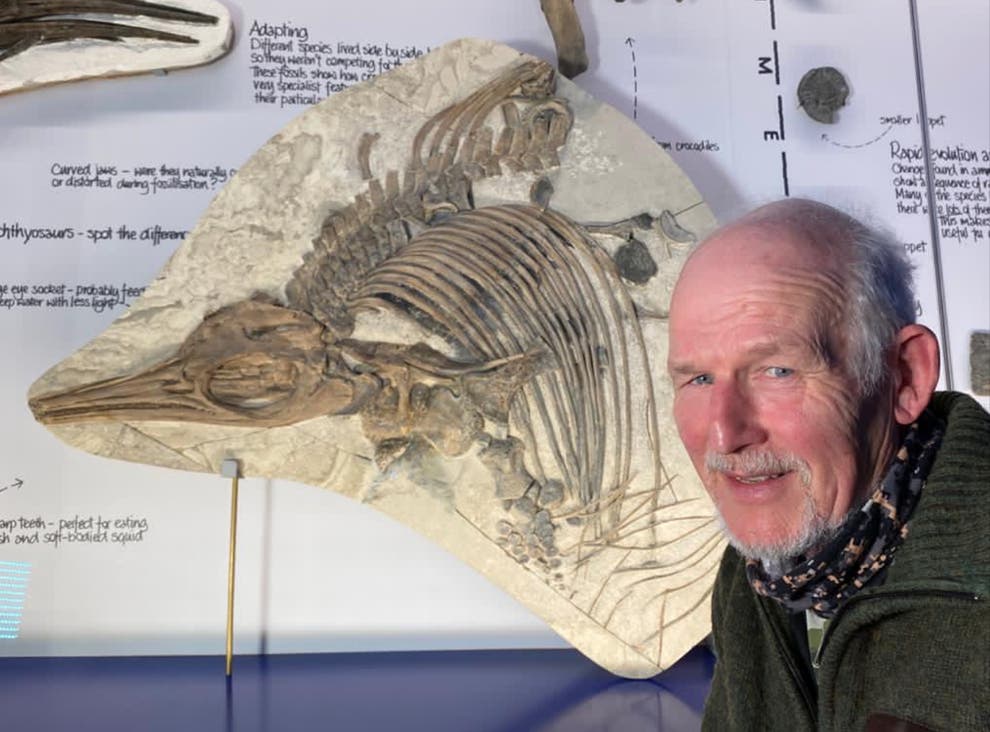A new image of the interstellar object 3I Atlas has revealed something extraordinary. Scientists have discovered that sunlight behaves in a completely unique way around this object, unlike anything previously observed or imagined. The image, captured by the Mastcam-Z camera on NASA’s Perseverance rover on Mars, shows a faint, blurry spot in the Martian sky where 3I Atlas was expected to appear. This marks the first time the object has been seen from such a close distance. In the image, the comet appears as a faint smudge near a group of stars, each with a magnitude of about 8. Additional data also indicates something moving in the Martian sky, believed to be 3I Atlas itself. Notably, this image was taken one day before the object’s closest approach to Mars, as the actual closest approach could only be properly observed by Mars orbiters. Due to NASA’s current shutdown issues, detailed close-up images may not be released for some time.
During 3I Atlas’s close pass by Mars, the Perseverance rover recorded increased surface activity, including dust devils swirling around and a large dust storm forming on the horizon. The comet’s tail was not visible in the rover’s images, as it was too faint at the time. Scientists note that 3I Atlas is unusual due to its lack of a prominent tail, a rare trait for comets. However, as it approached Mars, it began to develop a thin, faint tail, much narrower than those of typical comets. Other unverified images suggest the comet has an elongated shape, resembling the interstellar object ‘Oumuamua more than 2I/Borisov.
On October 3, 3I Atlas passed within 0.19 astronomical units (approximately 28 million km) of Mars. It is now traveling at nearly 200,000 mph toward its perihelion, the closest point to the sun. However, an unexpected event occurred: astronomers believe a coronal mass ejection—a massive burst of solar energy and particles—may have caused the comet to temporarily disappear from view, likely due to its increasing distance and the sun’s glare. Earth’s movement in the opposite direction relative to the comet also makes it harder to observe against the bright stellar background. As a result, 3I Atlas is not expected to be visible again until later this year.
Recent observations have revealed anomalies in the comet’s structure and light behavior that challenge our understanding of such objects. The first polarimetric observations of 3I Atlas showed an unprecedented level of negative polarization, reaching a minimum of -2.77% at a phase angle of 6.4°. This suggests that the dust grains around 3I Atlas are significantly different from those of comets originating in our solar system, possibly rougher, more irregular, or composed of rare or unknown materials. This behavior is unique among all known comets and interstellar objects.
Scientists suggest that 3I Atlas may have formed in a distinct environment, possibly in another star system or at the edge of our own, where conditions are colder and icier. Research indicates it could be older than our solar system and may have originated from the inner regions of our galaxy, making it one of the most ancient objects to pass through our solar neighborhood.
Further observations revealed an unusual chemical composition around 3I Atlas, resembling the atmosphere and surface conditions of Mars. This suggests it may not have formed in a typical comet-forming region but possibly on a planetary surface with Mars-like conditions. The object also appears to glow in ways not seen in typical comets, raising the possibility that it could evaporate significantly or even break apart as it approaches perihelion.
Despite shedding gas and forming a visible cloud, 3I Atlas’s trajectory remains unaffected, unlike most comets, which experience slight course changes due to gas release. This anomaly suggests the object is far denser and heavier than expected, with recent estimates indicating a mass of over 33 billion tons—thousands of times more massive than any known comet. Some scientists argue that the limited rocky material in interstellar space makes it unlikely for such a massive object to form naturally, prompting speculation about its origins.
Professor Ai Loab categorized the anomalies of 3I Atlas into two groups. The first includes phenomena that may be explained with further data, such as its size, unusual chemical composition, strong negative polarization, and a forward jet of scattered sunlight about ten times longer than it is wide, pointing toward the sun. The second group includes mysteries that may remain unexplained, such as the object’s trajectory aligning within 5° of the ecliptic plane, its precisely timed close approaches to Mars, Venus, and Jupiter, and its arrival direction aligning within 9° of the 1977 WOW signal, once thought to be a potential extraterrestrial signal. Professor Loab argues that those claiming 3I Atlas is a typical comet must account for these coincidences through natural processes.
























